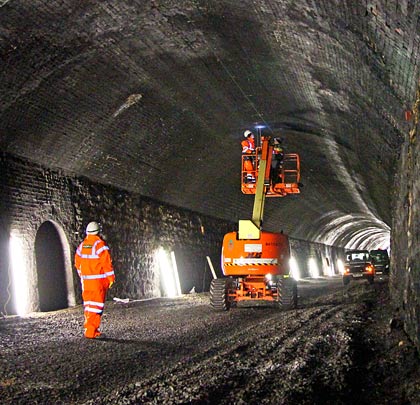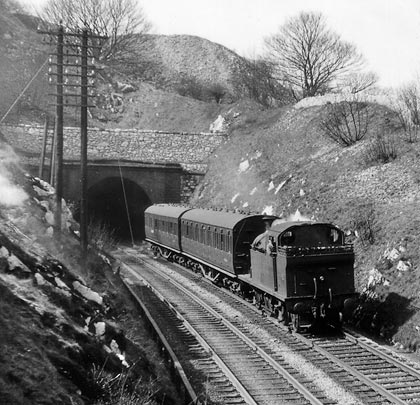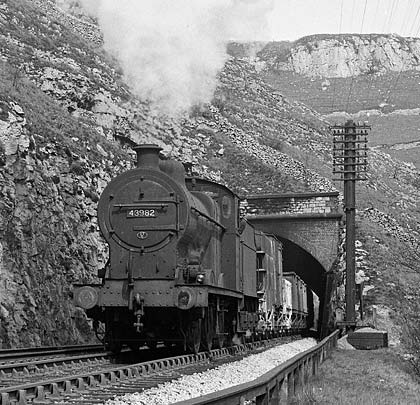Chee Tor tunnels
Chee Tor tunnels


























30th May 1863 saw the opening of an exceptional section of railway, eventually forming part of a main line link between London and Manchester. Built by the Midland, it cut a route through the limestone landscape of Derbyshire’s Wye Valley between Hassop and Buxton, demanding eight tunnels totalling 2,426 yards, two major viaducts and a number of smaller ones in the space of just 11 miles. But the audacity and investment did not live long. Barely a century after it opened, most of the route became an unlikely victim of the Beeching-era cuts, officially closing on 1st July 1968.
In 1981, the Peak District National Park Authority concluded lengthy negotiations with British Rail to secure the trackbed. Along it was laid the Monsal Trail – a nine-mile path linking Blackwell Mill Junction, east of Buxton, with a bridge over Coombs Road on the Matlock side of Bakewell. Since the summer of 2011, four of the tunnels – which had previously been closed for safety reasons – have been opened up for walkers, cyclists and horse riders to use, creating an easy linear connection between the Trail’s two ends.
Situated half-a-mile west of Miller’s Dale, Chee Tor No.1 Tunnel, structure number 76, extends for 401 yards. A single-arched bridge intervenes before No.2 tunnel is encountered, 94 yards in length. The steeply rising ground ensures that none of the approach cuttings is long, the most significant being at the east end of No.1. Westwards from No.2 tunnel, the line sits on a ledge with a vertical rock face on its north side.
Entering No.1 tunnel, westbound trains encountered a long curve to the south of 40 chains radius, after which a straight alignment takes over. The gradient throughout rises at 1:101. For the first 30 yards or so, the tunnel has a horseshoe profile with the arch – five bricks thick – supported on exposed rock. Beyond is a segmental arch springing off high haunches. This latter approach is replicated in No.2 tunnel. Engineering brick is the predominant material for the sidewalls through the curve, giving way to masonry in the straight section. The arch is brick throughout. Sections of the tunnel were relined in 1887 which possibly accounts for the inconsistent use of materials. Refuges are provided at both sides. Whilst generally dry, small deposits of calcite are found locally.
Construction work was aided by sinking a single shaft, 78 yards from the eastern entrance. This was subsequently bricked up and backfilled, its location marked by a sign high on the Down sidewall.
On 2nd July 1861 – the same day as five navvies were killed in a collapse at nearby Haddon Tunnel – two miners were crushed when a failed shot belatedly fired as they returned to their working face in the tunnel. The pair’s injuries were attended to by a local surgeon.
During its operational period, Chee Tor witnessed a number of deaths and injuries. In June 1876, 24-year-old Edwin Taylor, a railway porter, was struck by a train in the tunnel as he walked from Miller’s Dale to nearby Peak Forest Station. Early in November 1896, Joseph Jackson, a platelayer helping to remove some girders from the tunnel roof, had three of his fingers so badly crushed that they had to be cut off. And in January 1902, three quarry workers took a short cut along the railway from their home near Miller’s Dale to work at Ashwood Dale. They were walking along the Up line such that they would see any trains coming towards them. However they were not aware that single line working had been introduced due to a nearby points failure. As they neared the tunnel, they were struck and killed by a light engine that approached quietly from behind.








